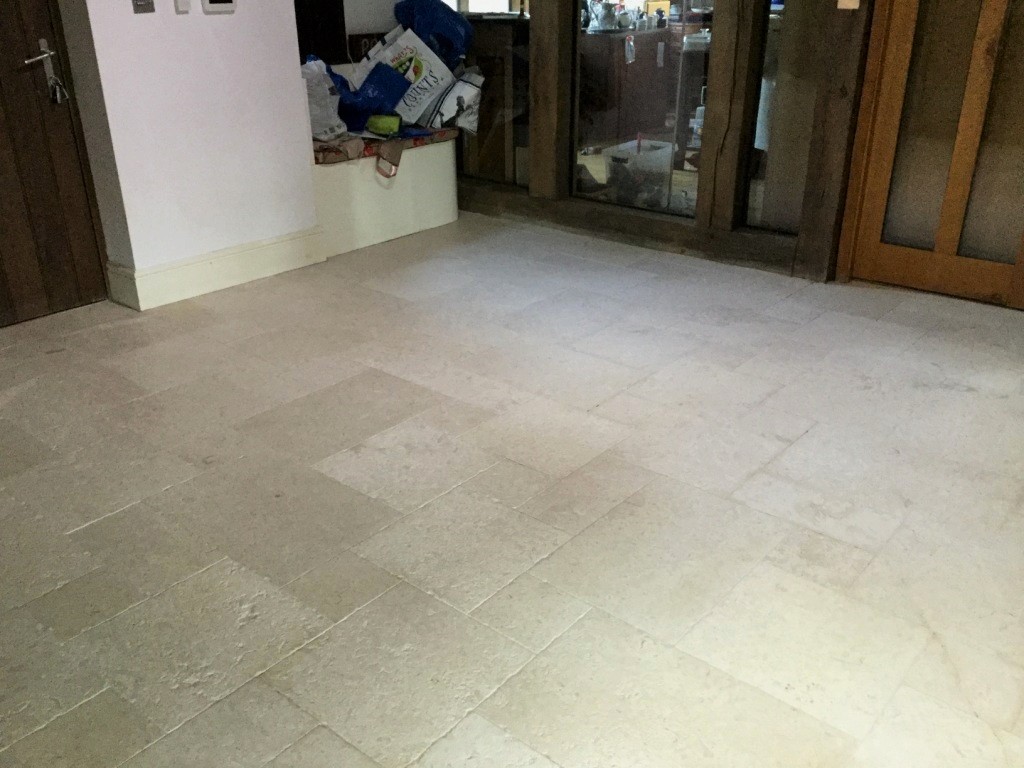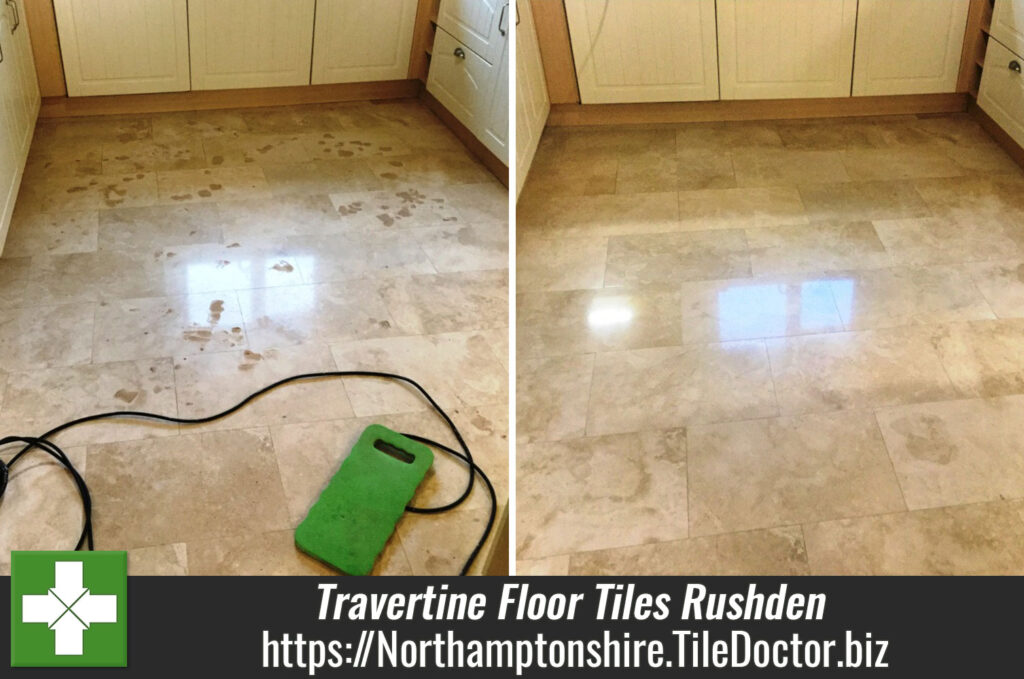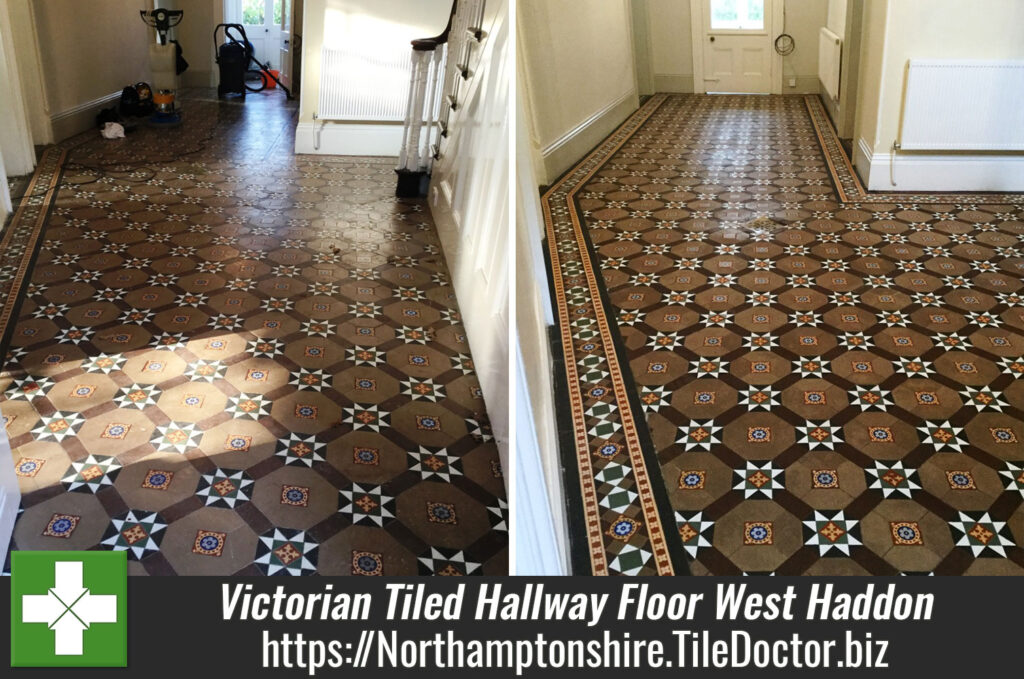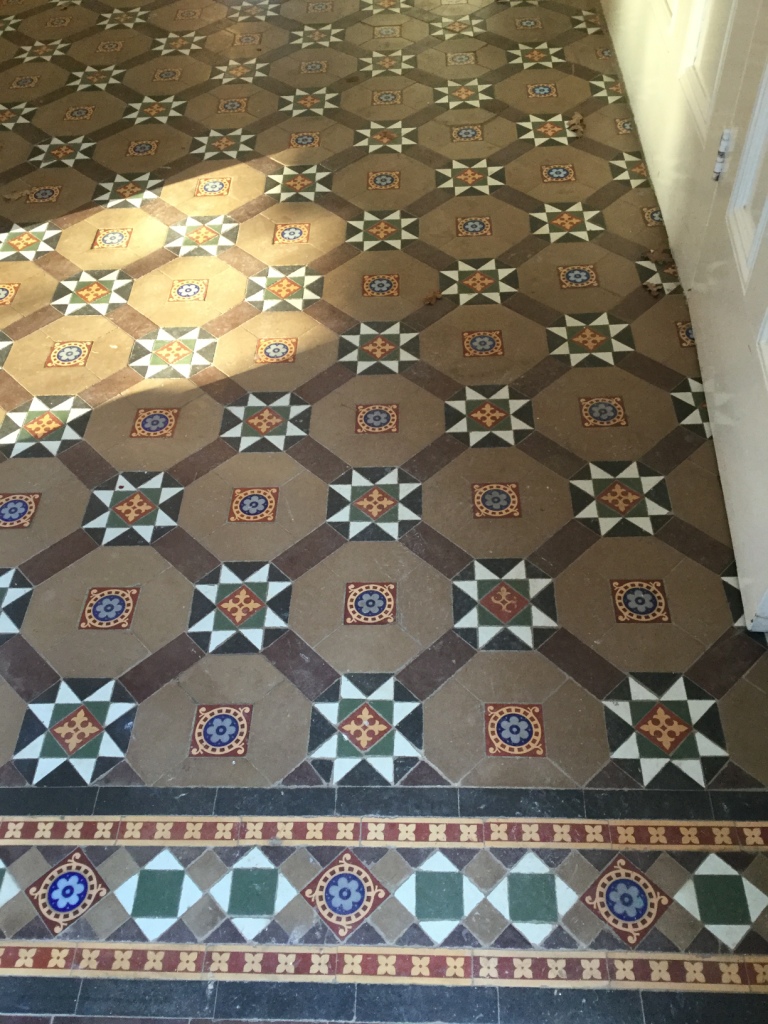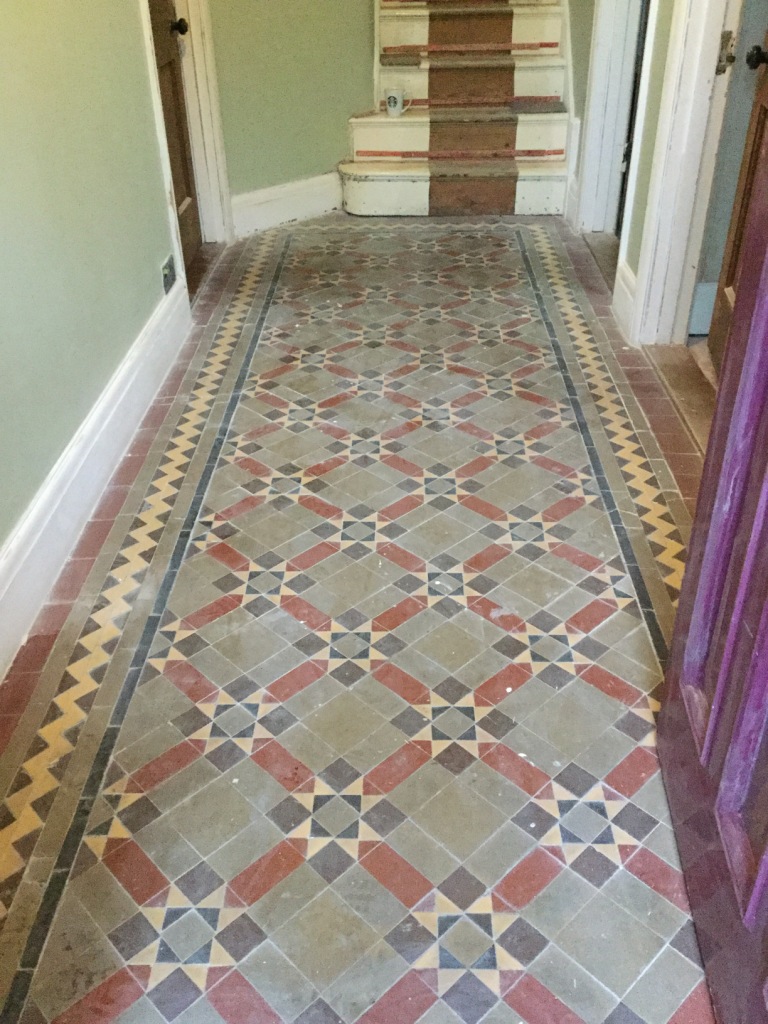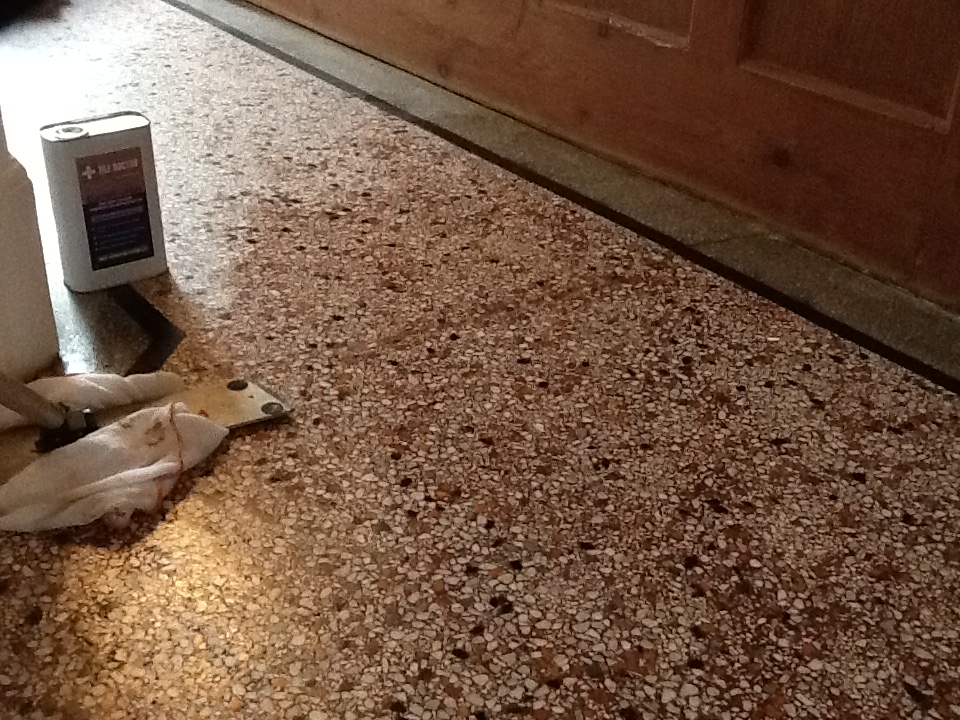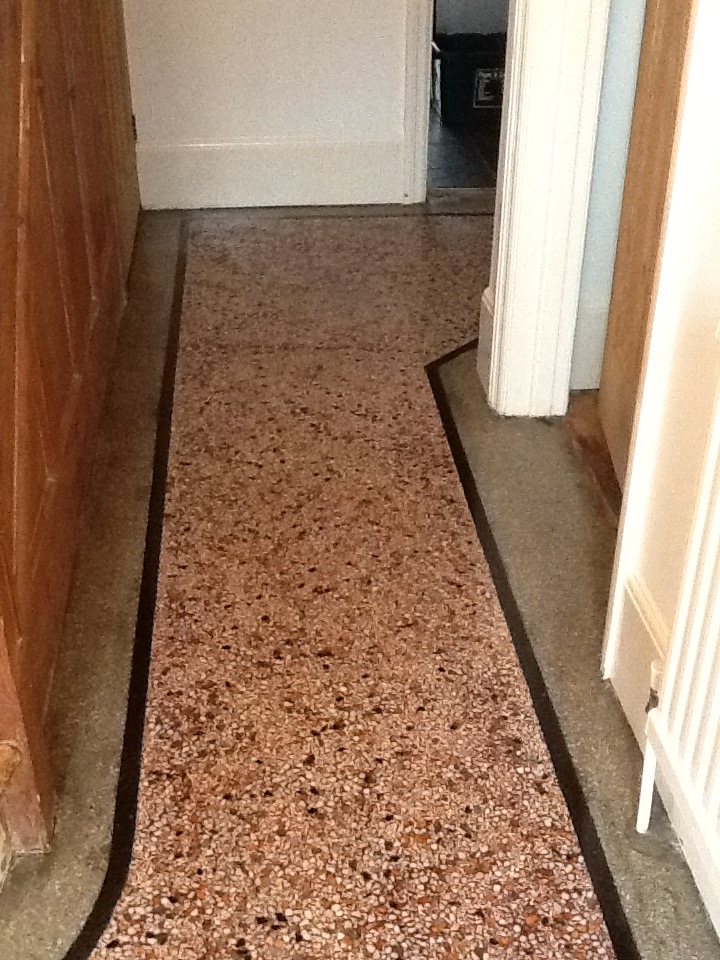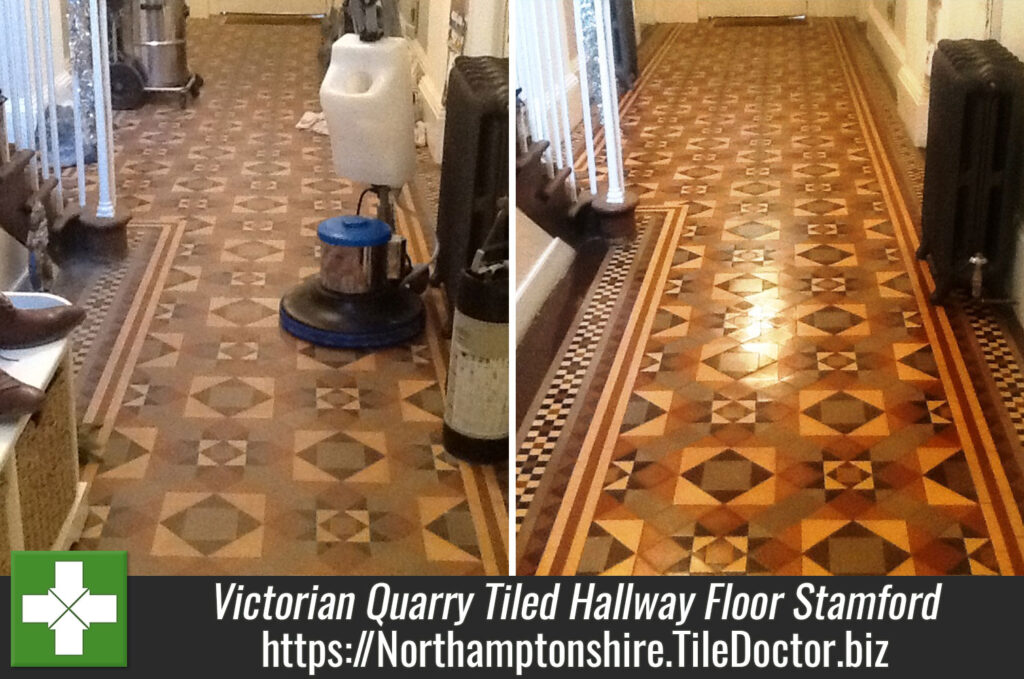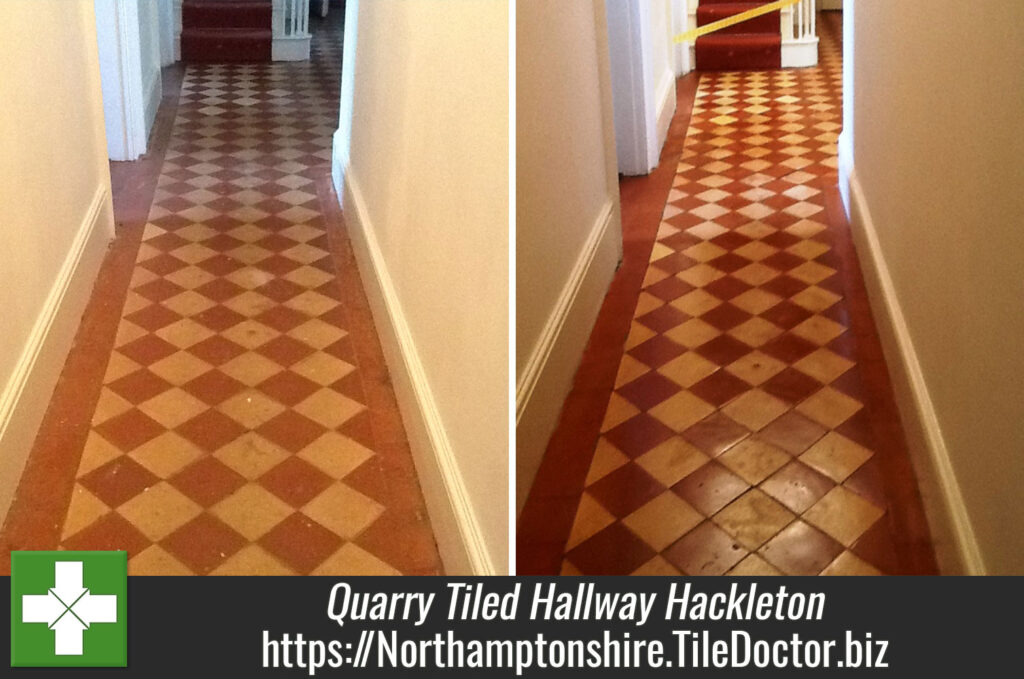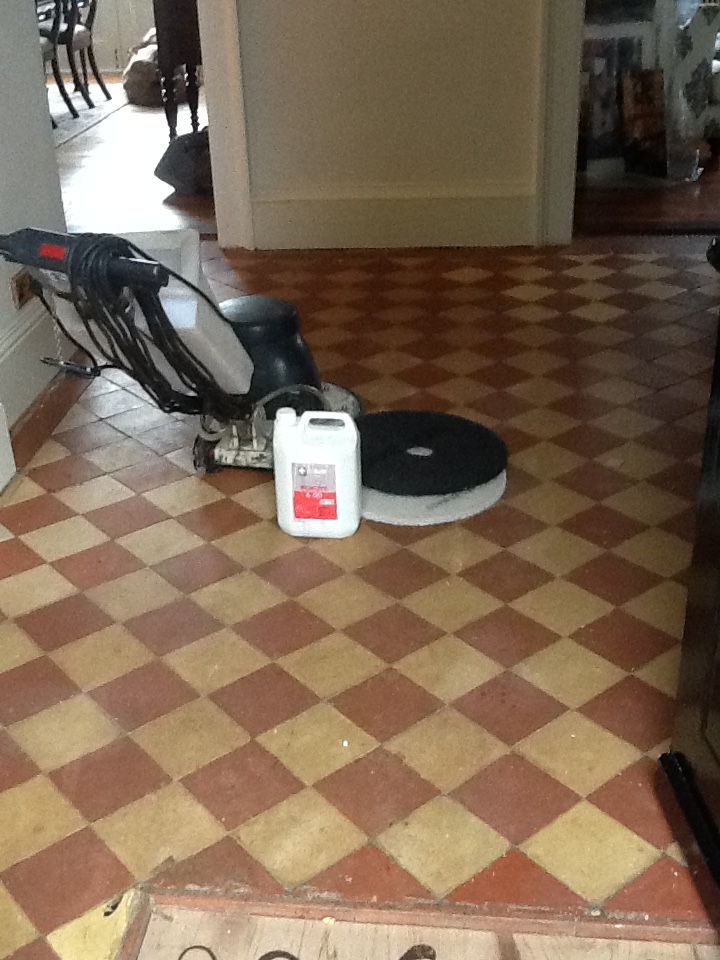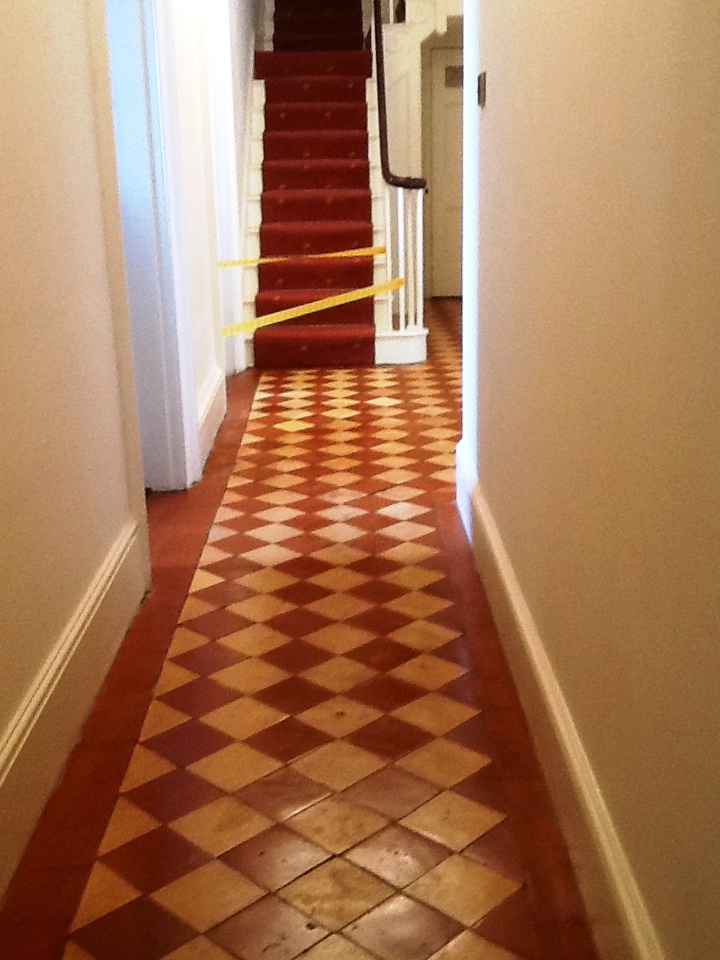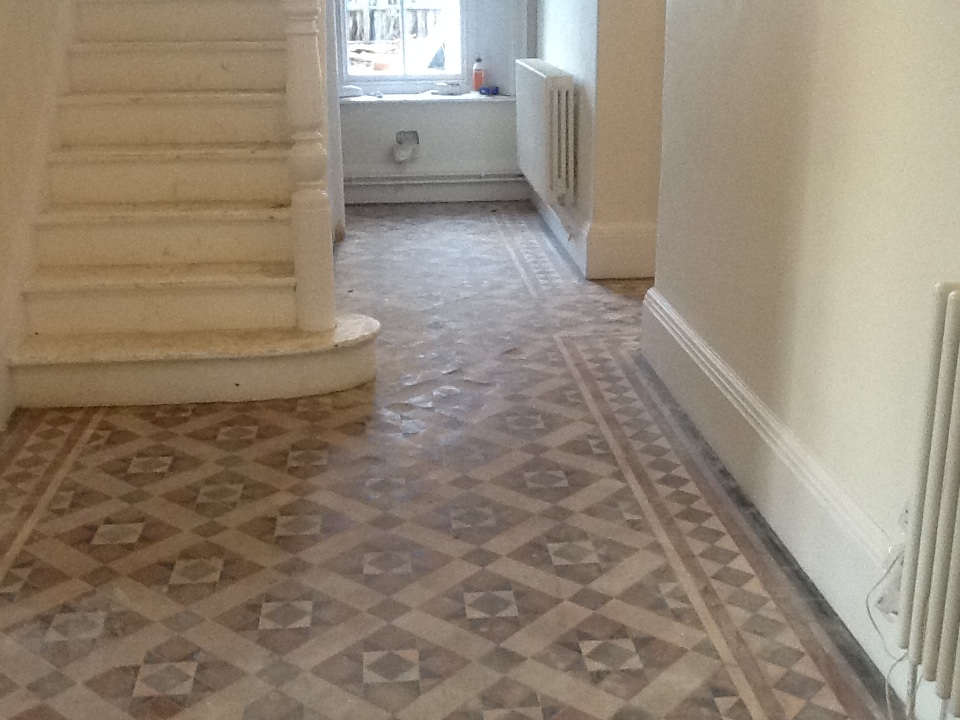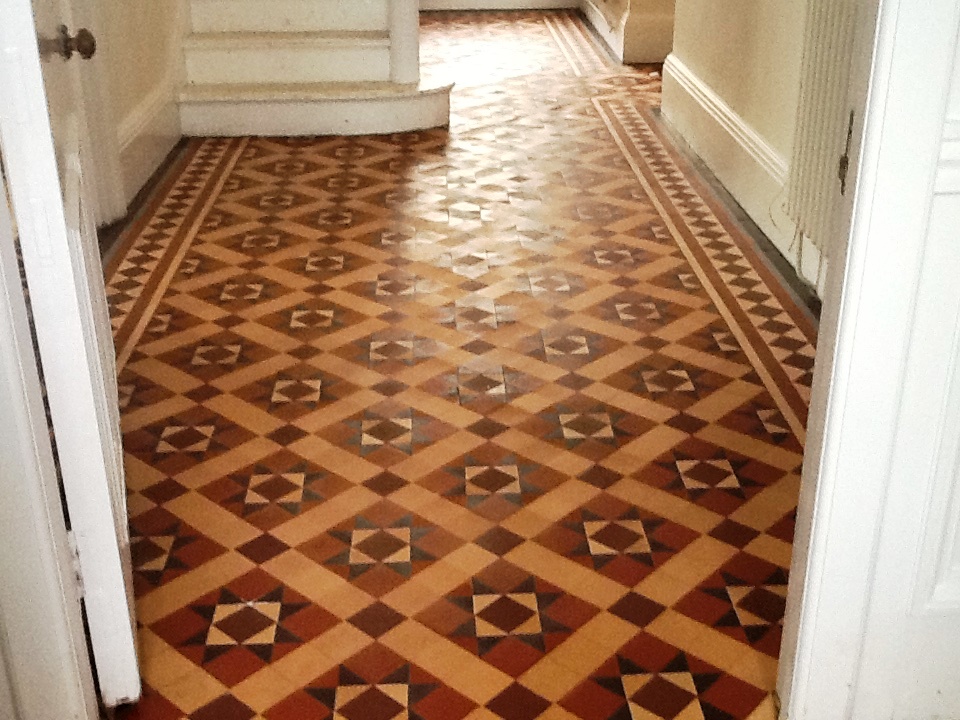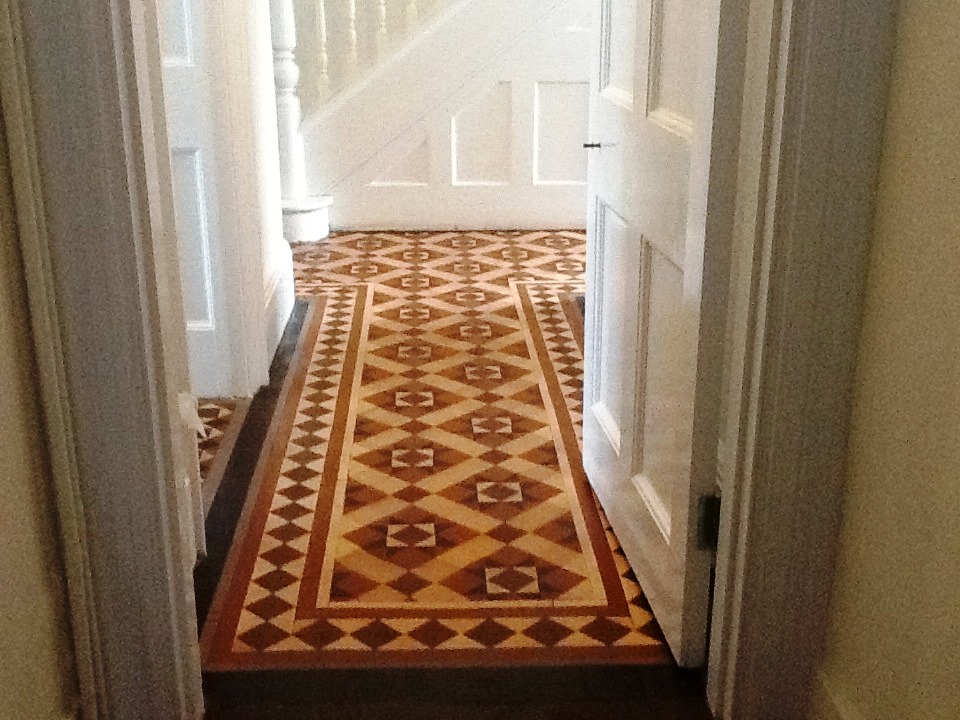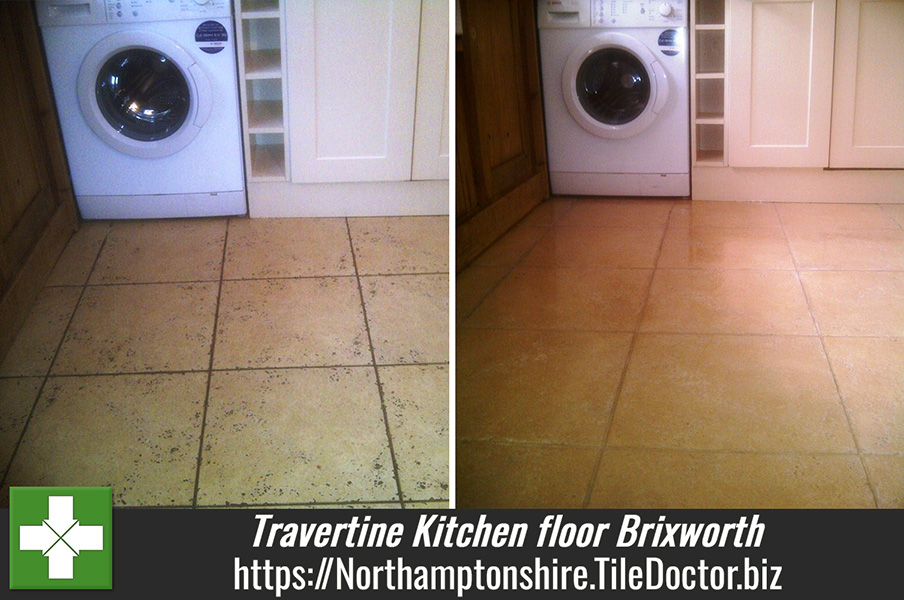Cleaning 100 Year Old Mosaic Tiles in Abington Park
My customer recently got in touch and requested a site visit to look at her hallway floor.
The Edwardian property was situated in the Abington Park part of Northampton which is an area is steeped in history, with the nearby Manor House said to have been the home of William Shakespeare’s daughter Elizabeth Bernard. The house has since been turned into a museum.
As you can see from the photos, the floor which was laid when the house was built over 100 years ago using small square brown and beige mosaic tiles in a repeating. Although in good physical condition for its age the floor was looking a little tired and had lost its lustre and vibrant colour. The hallway also had stained wood panelling on one side which was another original feature and the owner of the property was keen to maintain the period feel.

I discussed with the customer what we could do to restore the floor, explaining the process, timescale and of course the cost. She was happy to go ahead so we scheduled the work in without delay.

Cleaning an Edwardian Mosaic Tiled Hallway Floor
In order to protect the wall panels and keep the moisture in the floor to a minimum I decided to keep the use of cleaning products to a minimum. This is always a concern with these old floors which have no damp proof membrane as the use of too much water can lead to efflorescence salts appearing later. With this in mid I decided to clean the floor using Tile Doctor burnishing pads as these pads only require a small amount of water and no products, this would also have the benefit of slightly levelling out the surface of the tiles.
My first course of action was to vacuum the floor to ensure there was no loose debris followed by masking up the bottom of the stairs carpet to protect it. I then started the restoration process by using a coarse 100-grit Tile Doctor burnishing pad attached to a 17” industrial rotary machine and a small amount of water to lubricate the process. The 100-grit pad is quite an aggressive pad which removes deeply imbedded stains and as mentioned before a small amount of unevenness. To remove the resultant slurry the floor was rinsed with a small amount of water which was then extracted using a wet pick up machine. This process was then repeated with a 200-grit burnishing pad to smooth out any scratches and polish the tile ready for sealing.
Although it was a relatively small area, 12 square metres this process took the whole day as we work in small sections at a time. Moving the machine slowly with multiple passes over each area.
Sealing an Edwardian Tiled Hallway Floor
I returned the following day and assessed the floor to ensure we were happy with the result from the previous days cleaning. I also took damp meter readings and was pleased to see they were within normal expectations for a floor of this age. Next, I applied Tile Doctor Colour Grow Sealant which is a breathable sealant that will allow any moisture in the sub floor to rise though the tile. This particular sealer is a colour enhancing sealer that protects and improves the natural colours in the tile and leaves a lovely natural finish. The floor now has a much more even finish and will be much easier for the client to maintain in the future.

The customer was very happy with the results and left the following feedback on the Tile Doctor feedback system.
“Great communication about the work planned and quotation. A super job in bringing my Edwardian mosaic tiled floor back to life. Would highly recommend this service”
Karen M”

Professional Restoration of Mosaic Hallway Tiles in Northamptonshire
Cleaning 100 Year Old Mosaic Tiles in Abington Park Read More »










